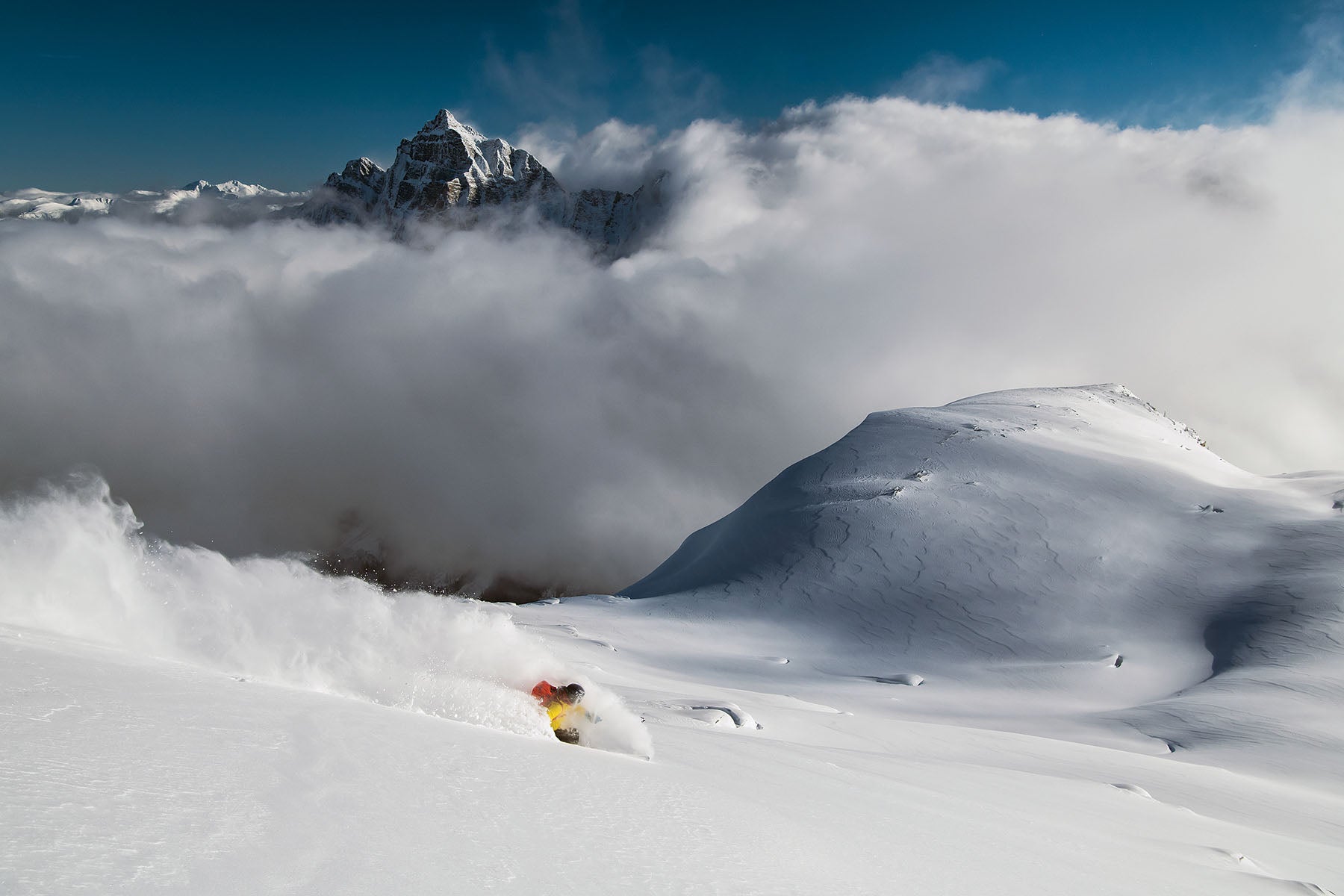Electric Company

Photo credit: Bruno Long
Until the 19th century, humans couldn’t cover more than about 40 miles a day on a good packhorse. In 1804, the world’s first locomotive doubled that distance. Then the ’50s and ’60s ushered in an age of transcontinental commercial flight. But the most important development in personal travel ever has been the car. First introduced to the world in 1908 with the Ford Model T, North America went on to be built around the automobile, which today is synonymous with the very notion of freedom. So why, 110 years later, would anyone give that up?
For professional ski mountaineer Greg Hill, taking a step forward, at this point in time, means first taking a step back. Starting in 2017, the Revelstoke, B.C.-based 43-year-old peak bagger—famous for breaking numerous world records for vertical feet climbed and skied by human legs—made an indefinite commitment to only go where electric technology could take him, all but stopping his globetrotting exploits dead in their tracks. “Mountaineering in North America revolves around fossil fuels,” he says, explaining he’s hoping to break a cycle of travel that’s contributing to devastating climate change. He launched his “electric adventures” campaign a year and a half ago as a goal to climb and ski 100 peaks via electric access, and prove the technology works for adventure. “I think now we’re finally at a point where there are options… Really the goal is to keep going forever,” he adds while loading up his Chevrolet Bolt, a compact car with a 250-mile range, for his daily winter commute to the backcountry mecca of Rogers Pass, 50 miles east. “The world’s an incredible place, and I still want to explore it,” he says, “I just have to figure out how to do it so it’s sustainable.”
A father of two, he’s now given up far-flung expeditions. Hill’s carbon abstinence extends to flying too, both in planes and helicopters—neither of which have electric alternatives on the horizon. He’s thoroughly grounded himself on the hydropower his province produces, while preaching the surprising gospel of localism that’s since revealed itself to him. “So many mountains you access from a trailhead off a paved road. But we like to think we need a big truck and snowmobile. I think a lot of people don’t explore their own backyards enough.”
Read More: Saving Winter
To date, Hill’s summited 70 world-class peaks without burning a drop of gasoline, garnered national attention in a television commercial, and even tagged a few first descents. But he’s still realistic that most people want to, and will, travel. His personal regimen is really just there to expand what people see as possible. He’s even smashed out two epic road trips despite their onerous charging times: one to ski volcanoes in the Pacific Northwest, and another to Denver, Colorado, to present The Curve of Time, a film about the previous trip. “When we skied all those volcanoes, we saw over 3,000 people,” he notes. “Maybe we saved 100 gallons of fuel. If 50 percent of those people did that, that’s impact.”
Fair enough. If necessity is the mother of all invention, perhaps self-imposed limits are actually the best way to push our boundaries. With a résumé like Hill’s, he’d know.
Originally published in the October 2018 issue of SKI Magazine.